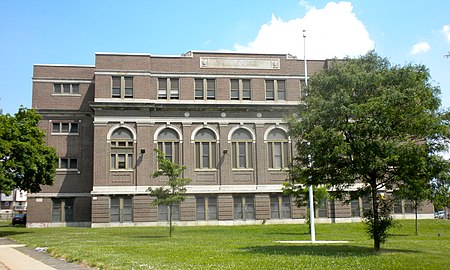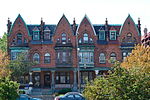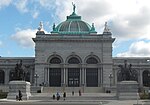Rudolph Blankenburg School

Rudolph Blankenburg School is a historic school located in the Mill Creek neighborhood of Philadelphia, Pennsylvania. It is part of the School District of Philadelphia. It is named in honor of Rudolph Blankenburg, who was mayor of Philadelphia between 1911 and 1915. The building was designed by Irwin T. Catharine and built in 1923–1925. It is a three-story, nine bay by five bay, brick building on a raised basement in the Colonial Revival style. It features large stone arch surrounds on the first level, a projecting entrance pavilion, a double stone cornice, and brick parapet topped by stone coping.The building was added to the National Register of Historic Places in 1988.
Excerpt from the Wikipedia article Rudolph Blankenburg School (License: CC BY-SA 3.0, Authors, Images).Rudolph Blankenburg School
N 47th Street, Philadelphia
Geographical coordinates (GPS) Address Nearby Places Show on map
Geographical coordinates (GPS)
| Latitude | Longitude |
|---|---|
| N 39.9727 ° | E -75.2152 ° |
Address
Rudolph Blankenburg Elementary School (Blankenburg Elementary School)
N 47th Street
19139 Philadelphia
Pennsylvania, United States
Open on Google Maps









